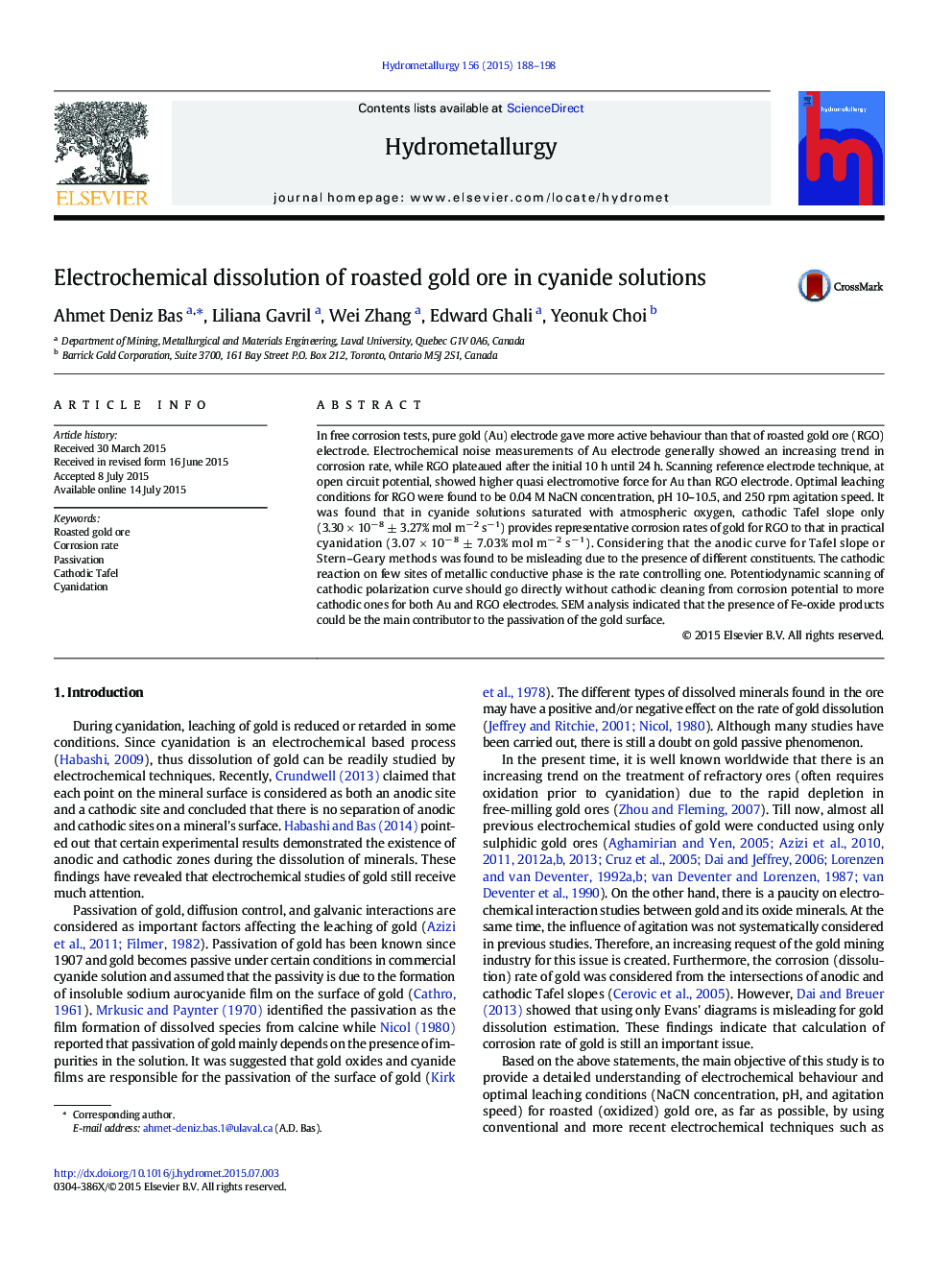| کد مقاله | کد نشریه | سال انتشار | مقاله انگلیسی | نسخه تمام متن |
|---|---|---|---|---|
| 212012 | 462029 | 2015 | 11 صفحه PDF | دانلود رایگان |
• Electrochemical dissolution of roasted gold ore (RGO) was investigated.
• 0.04 M NaCN, pH 10–10.5, and 250 rpm agitation were found to be optimal for RGO.
• Consideration of cathodic Tafel and OCP for RGO represents conventional cyanidation.
• Anodic curve is misleading for corrosion rate estimation due to passivation.
• Fe-oxide species, responsible for partial passivation of gold, were observed by SEM.
In free corrosion tests, pure gold (Au) electrode gave more active behaviour than that of roasted gold ore (RGO) electrode. Electrochemical noise measurements of Au electrode generally showed an increasing trend in corrosion rate, while RGO plateaued after the initial 10 h until 24 h. Scanning reference electrode technique, at open circuit potential, showed higher quasi electromotive force for Au than RGO electrode. Optimal leaching conditions for RGO were found to be 0.04 M NaCN concentration, pH 10–10.5, and 250 rpm agitation speed. It was found that in cyanide solutions saturated with atmospheric oxygen, cathodic Tafel slope only (3.30 × 10− 8 ± 3.27% mol m− 2 s− 1) provides representative corrosion rates of gold for RGO to that in practical cyanidation (3.07 × 10− 8 ± 7.03% mol m− 2 s− 1). Considering that the anodic curve for Tafel slope or Stern–Geary methods was found to be misleading due to the presence of different constituents. The cathodic reaction on few sites of metallic conductive phase is the rate controlling one. Potentiodynamic scanning of cathodic polarization curve should go directly without cathodic cleaning from corrosion potential to more cathodic ones for both Au and RGO electrodes. SEM analysis indicated that the presence of Fe-oxide products could be the main contributor to the passivation of the gold surface.
Journal: Hydrometallurgy - Volume 156, July 2015, Pages 188–198
